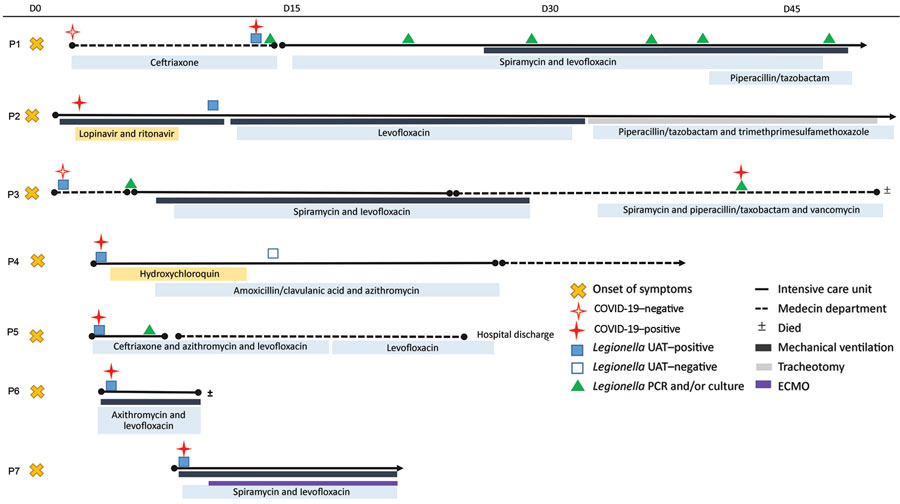Volume 27, Number 11—November 2021
Dispatch
Co-infection with Legionella and SARS-CoV-2, France, March 2020
Figure 1

Figure 1. Timeline of first Legionnaires’ disease symptoms among 7 Legionnaires’ disease/COVID-19 co-infected patients, France, March 2020. COVID-19, coronavirus disease; D, day; ECMO, extracorporeal membrane oxygenation; UAT, urinary antigen test.
1Members are listed at the end of this article.
Page created: August 12, 2021
Page updated: October 19, 2021
Page reviewed: October 19, 2021
The conclusions, findings, and opinions expressed by authors contributing to this journal do not necessarily reflect the official position of the U.S. Department of Health and Human Services, the Public Health Service, the Centers for Disease Control and Prevention, or the authors' affiliated institutions. Use of trade names is for identification only and does not imply endorsement by any of the groups named above.